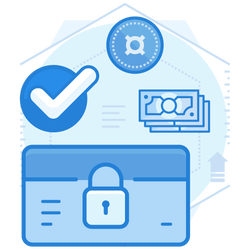Scammers Are Getting Smarter By The Day, Avoid Being A Victim Of Phishing And Identity Theft!
Phishing is a fraudulent practice that involves sending spoof e-mails impersonating reputed organizations and attempts to trick users into revealing their personal information. One of the worst consequences of phishing is identity theft.
Hackers who are engaged in phishing steal identities of their victims. They do it to gain unauthorized access to their names and resources. Since phishing attacks were first discovered back in the ’90s, they have evolved from being crudely implemented attempts, to more sophisticated attacks today. Nowadays, these attacks are so intelligently designed and refined, that they can trick even the best computer experts.
Adversaries use various tools to create duplicate websites and e-mails that resemble the original ones entirely. At first sight, average users cannot differentiate between the real and the fake ones.
How Does Phishing Lead To Identity Theft?
During a phishing attack, hackers aim to trick victims into opening a fake website. For starters, the adversary disguises as a major bank or a retailer and sends out mass e-mails. Through these e-mails, they try to deceive the recipients by mentioning that there has been some crisis. The hackers then intimate the recipient that they need to share their details urgently failing which, their account may get suspended. Those who are not aware of the modus operandi of these attackers supply their information only to find out later that they have become victims of identity theft.
The phishing e-mails demand some or all of the following details of victims:
- Social Security numbers
- Credit card numbers
- PINs
- Account numbers


What Are The Ramifications Of An Identity Theft?
It is always better to not become a victim of phishing and identity theft than trying to face the ramifications later. Identity theft may prove to be disastrous for both individuals and enterprises. Some of its consequences are:
- Even with very little information about a person, hackers can do considerable damage to the victim. When filling a credit card application form online, the details requested will be like the Social Security Number (SSN), address, birth date, mobile number, occupation, etc.With this information in hand, hackers can easily create fake credit cards bearing the victim’s name and sell it in the black market.
- The victim may need to come up with various explanations and proofs to make bankers, and others believe that he is a victim of identity theft.
- Until the victim comes clear of the charges, their credit rating will get affected, and they will not be able to get new loans or mortgages. In the worst-case scenario, they will lose their job.
Why Do People Fall For Such Phishing Attacks?
- Scammers take advantage of necessary and everyday processes. Most of the crucial business communication takes place online, and people use digital media to apply for jobs and colleges. In this scenario, when the importance of digital media is changing vis a vis print media, it is but natural to question the legitimacy of the digital content.
- However, the main reason phishing attacks are increasing day by day is that people are not alert and sensible when transacting over the digital arena. It just takes a fake e-mail to get all their personal information.
- Hackers use highly persuasive techniques to trick users. The basic human emotions like excitement or fear, make the victims fall for the scam offer. Adversaries exploit this ‘gut reaction’ to the scam offer and steal the personal details of the victims.
- These phishing attacks also exploit the victim’s trust for authority. It is the reason why they impersonate leading financial institutions to trick users into parting with their account information.
- Nobody is immune to these targeted phishing attacks, which lead to identity theft. Thus, every user needs to be on guard for themselves, as well as their family. It is necessary to save themselves from falling victim to the evil designs of hackers. One needs to know how to differentiate and identify a fake e-mail and a fake website.


How To Avoid Becoming A Victim Of Phishing And Identity Theft?
As intelligent and responsible users, make sure to follow the tips outlined below to safeguard yourself from phishing e-mails:
- People need to become extra careful when clicking links in e-mails, especially when they get suspicious about an e-mail.
- Check the URL of the links and ensure that it takes to the page it is supposed to.
- Install anti-phishing software to help in providing immediate alerts whenever you click on a malicious URL
- Always check the genuineness of the sender’s address. Most of the brands have their name in the e-mail address
- It is also crucial to check the spelling of the sender’s e-mail address. Hackers can trick you with an e-mail address that looks similar to an address that people often use.
- Some fake websites created in a hurry can have a lot of spelling mistakes. But remember popular brands treat communication with customers as a vital aspect, and therefore, you won’t find any errors on original websites and authentic e-mails.
- Never download attachments from suspicious e-mails.
Conclusion
Phishing e-mails are cleverly designed and may seem authentic and tempt people to act immediately. Most of the time, people fall prey to these e-mails because they don’t have any knowledge about phishing and identity thefts. Thus, proper knowledge goes a long way in protecting oneself from any threats in the digital arena.
Enterprise-class email protection without the enterprise price
For flexible per-user pricing, PhishProtection’s integrated email security solution protects your employees from business email compromise (BEC) and many other email threats. 24×7. On any device. With features you’d expect in more expensive solutions:
All Plans Come With
- Stops business email compromise (BEC)
- Stops brand forgery emails
- Stop threatening emails before they reach the inbox
- Continuous link checking
- Real-time website scanning
- Real time alerts to users and administrators
- Protection with settings you control
- Protection against zero day vulnerabilities
- Complete situational awareness from web-based console
Join 7500+ Organizations that use Phish Protection
Phish Protection works with System Administrators, IT Professionals and IT Executives in thousands of companies worldwide. Sign up and protect your organization from phishing attacks in less than 5 minutes



